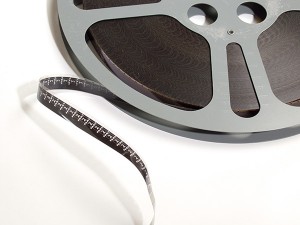 We have talked about preserving home movies, videos and old photographs by transferring them to more technologically up-to-date formats in two previous posts (Part I and Part II). But there is one more important consideration: when reformatting family memories, you should be aiming for two goals: viewable copies and archival copies. Which is to say, if you scan your old photographic prints so you can email them to family members or look at them on your phone, that’s great – but don’t get rid of the original photographic print or negative, because that is your archive.
We have talked about preserving home movies, videos and old photographs by transferring them to more technologically up-to-date formats in two previous posts (Part I and Part II). But there is one more important consideration: when reformatting family memories, you should be aiming for two goals: viewable copies and archival copies. Which is to say, if you scan your old photographic prints so you can email them to family members or look at them on your phone, that’s great – but don’t get rid of the original photographic print or negative, because that is your archive.
The reasoning behind this is that, like an archaeologist, you must look to the future as well as to the past. The day may come when there is even better technology to extract the original information than there is now. A perfect example is someone who transferred all their old reel-to-reel home movies to VHS tape in the ‘90’s, then disposed of the original film, and now is stuck with degraded and possibly unwatchable footage. The fact of the matter is, the quality of a pristine VHS tape was never as good as that original film. If you want to transfer something so you can watch it on the newest technology, that is fine, but don’t get rid of the original. For more information on saving and preserving audio/visual materials, see this information on the Library of Congress website.
Photographic materials can last a very long time when stored properly. Think about that shoebox of photos that got passed down from generation to generation and ended up in your closet. They made it this far, and if stored in acid-free photo albums with non-PVC plastic pockets, they will last for many more generations. For more information on proper storage of photographs, check out this page at the Library of Congress.
One more thing: It would be very wise to also save the equipment that was used to record and/or view the archival materials. That means keeping the slide projector, film projector, VCR, DVD player and so on. That may sound a little crazy, but the day will come when you can’t pick up a VCR for five bucks at the thrift store, and when was the last time you saw a slide projector? If you don’t have room to store this equipment in your home, you might consider a climate-controlled storage unit. This is also a good location for the archival videos, photos and slides themselves that you have transferred or digitized, as well as external hard drives containing back-up copies of your digitized materials.
Many of us worry about preserving our priceless family memories, but never get around to actually doing anything about it. By setting aside a corner of your storage unit to store your family photo and audio/visual archives, you can rest easy, and know that future generations will thank you.
We have state-of-the-art storage centers offering climate-controlled units in Arizona, California, and Nevada.